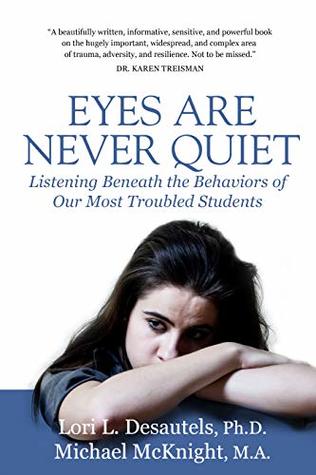More on this book
Kindle Notes & Highlights
Read between
July 27 - July 29, 2022
In children, anger is fear’s bodyguard.
five hidden wounds of racial trauma, including: 1) internalized devaluation; 2) assaulted sense of self; 3) internalized voicelessness; 4) the wound of rage; and 5) the sense of being a nobody.
They share how they have learned how to duck bullets before learning to read. This
educational justice.
In Van der Kolk’s words, complex trauma occurs when a young person experiences “multiple, chronic, and prolonged, developmentally adverse traumatic events, most
often of an interpersonal nature...and with early life onset.”
Children who have experienced complex trauma exhibit a more pronounced deficit in developmental brain-aligned stress response systems. In other words, this trauma compromises these youn...
This highlight has been truncated due to consecutive passage length restrictions.
A traumatized brain can be tired, hungry, worried, rejected, or detached, and these states are often accompanied by feelings of isolation, shame, worry, angst, and fear. Shame and fear in children can look violent and aggressive.
Chronic activation of the fear response can damage those parts of the brain responsible for cognition and learning.
the adversities and trauma of our children and others can create a secondary firestorm inside our own nervous systems.
“Faced with a range of challenging behaviors, caregivers have a tendency to deal with their frustration by retaliating in ways that often uncannily repeat the children’s early trauma.”
listening to learn rather than listening to respond.
1. Symbolic Gifts A talisman symbolizes ritual and ceremony, which our brains enjoy.
Nothing is more uplifting than when we serve each other,
These kids will show you pieces of yourself that you may never have experienced before. The intensity of the emotional experience will bring you to places that no one visits intentionally and often makes you feel really bad. No one talks about the feelings of hopelessness and despair that are part of working with these kids, and the absolute way that they fracture your self-confidence and your entire idea about yourself.
No one speaks of the pain that pain-based behavior causes those who work with them.
the language of the brain stem is sensation, the language of the limbic system is feelings. When
high emotional states equate to low logical states,
The mother’s emotions, thoughts, and perceptions can cross the placenta in the form of hormones, reprograming and preparing how the child will adapt to his or her environment.46
An exercise roller is an effective tool in helping a student feel pressure and sensation in the body, which helps him or her focus within the frontal lobe regions of the brain, creating a sensation of feeling the body in the “here and now.”
persistent state of alarm (i.e.,
Discipline focuses on solutions, not retribution.
REGULATE then RELATE and then REASON.
relationship resistant.
The practice of co-regulating with children and youth begins when adults change their focus from the surface behaviors they see in class to the emotions and sensations driving that behavior.
Our issues with these students are not behavioral, they are regulatory.


